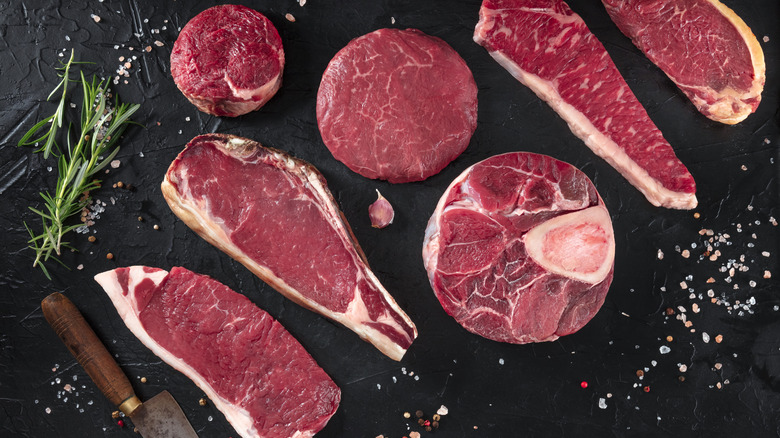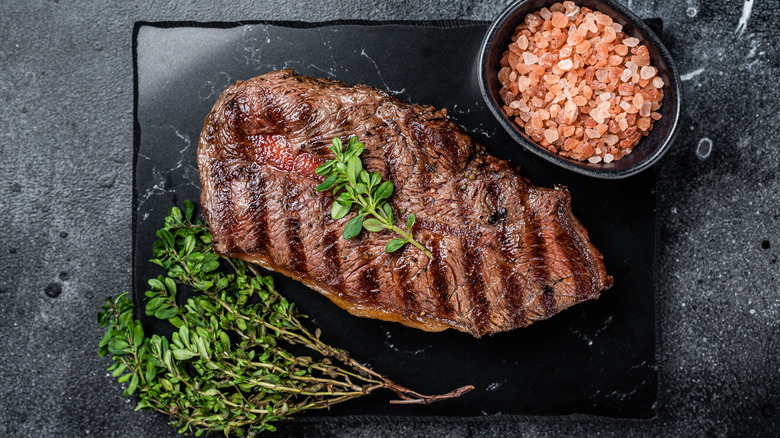This Affordable Cut Of Steak Is Probably One You've Never Heard Of
The price of groceries continues to soar, and if you've been priced out of more expensive cuts of meat, you're not alone. While some of the most underrated cuts of steak may vary in price, according to chef Thomas Odermatt, founder and CEO of Butcher's Bone Broth, there is one cut, which you've probably never heard of, that is both tasty and affordable. He told Food Republic, "I really like lesser-known beef cuts that are budget-friendly these days. Blade steak is one of them and ... [comes] from the shoulder of the beef."
"The blade steak, also better known as the paddle bone steak or shoulder blade bone steak ... actually is the same muscle as the flat iron cut," Odermatt explained. "Instead of filleting out the line of gristle [and] fat and cutting two long thin flatiron steaks, [it] cuts cross-section. This leaves the muscle intact and allows a thicker steak cut that sears better on the outside, while the inside cooks to a juicy medium-rare."
If you're interested in trying this cut of meat, you can ask your butcher for blade steaks. However, if you don't have access to a dedicated meat counter, you can also check the beef department at your local supermarket and look for a variety of names, including top-blade steak or even chicken steak. Careful, though — you might get sticker shock at how much you can save since they tend to be a fraction of the cost of ribeyes.
How to prep and cook blade steak like a pro
Thomas Odermatt also offered his guidance for prepping blade steak for the grill or stove. "As in most beef preparation, I like to take the beef out of the refrigerator about one hour before grilling or searing," he said. Then he intrusted to "season with salt and pepper, and give the steak a good sear on your cast iron" or a toss onto the grill. Removing the steaks from the fridge lets them come up to room temperature, a process called tempering, which helps them to cook more evenly.
There is the matter of the gristle line, however, which can be a tough eat. You might just eat around it once the steaks are cooked, or you can remove it and create the two flat iron steaks. If you opt for the latter option, make sure you use a very sharp knife and cut away from yourself. If you want to keep your blade steak whole, but also deal with the matter of the chewy gristle, braising or slow-cooking are fantastic options. Both of these methods will break down that tough line of fat so that it's both chewable and swallowable.


